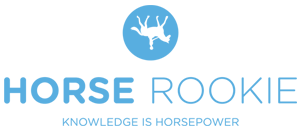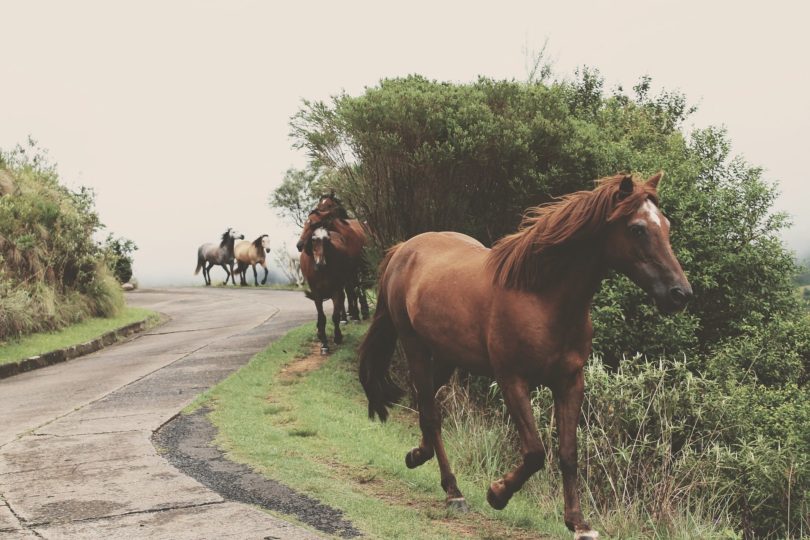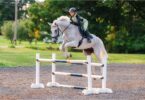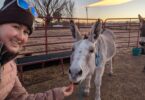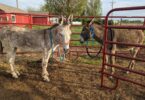New Horse, Old Problems
I’ll never forget the experience of buying a new horse. When I got Chip, I was overwhelmed and overjoyed to have all of those “firsts” of horse ownership: the first time I had the farrier out to trim his feet, the first time I developed a training routine with him, the first time I went to buy his grain and supplements. The first spook, though, was not so fun.
The stable was not far from a beautiful trail head, so Chip had been down that road and through those trails many times. I still expected that he would be nervous on the way down the mountain the first time with me, and I planned for it in the best way I knew possible.
While he was new to me, he was not a colt. He had learned much and gotten away with more.
As such, he was a huge ball of nerves — not just a bit touchy. Furthermore, the most frustrating part was that he tried to take charge of the ride the whole time.
In the same way someone might try to take over a situation by micromanaging everything, Chip was so bent on having control of our direction that he would zig-zag everywhere, speed up and slow down sporadically, and flat-out try to spin around and head back to the barn whenever my body relaxed enough to be supple in the aids.
It took me a while to figure out exactly what was going on. I was frankly agitated after these trail rides, because everything was a fight. None of my communication to him went unchallenged. It got to the point where on a group trail ride, he spun and shifted and danced right to the edge of the mountain’s edge.
Had I not known the emergency dismount, I’m not sure I would have been able to safely get off and get him back under control.
I had done nothing that I could think of to cause him pain, or excessive fear. But at every turn, he was trying to ascertain control, and that control came in the form of challenging my every instruction. Incidentally, he was also very spooky, nervous, and tense.
So what was going on?
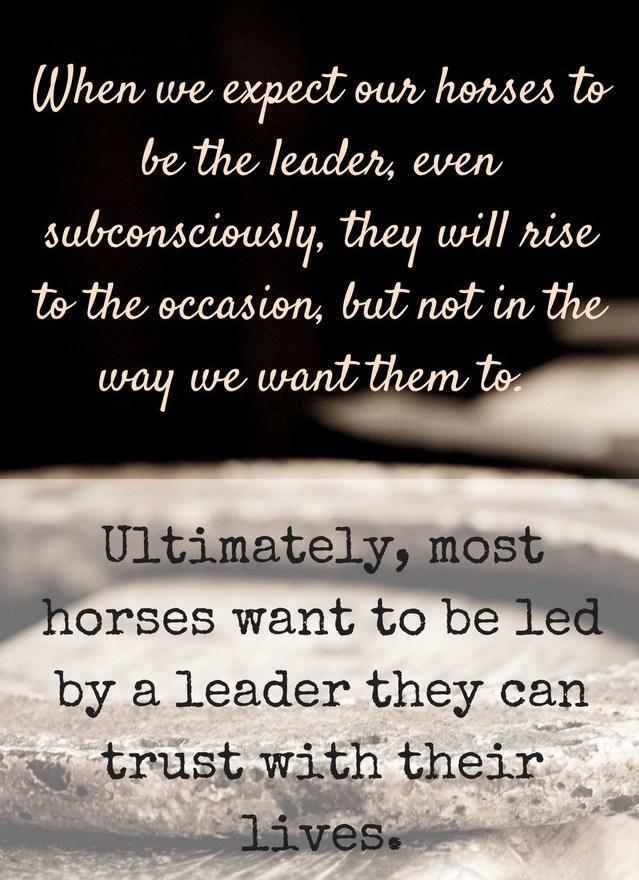
Source: Lindsey Rains
Chip wasn’t trying to challenge me out of obstinance or dominance, but something else entirely. He was reactive and nervous, not aggressive.
Chip had been handled by a few different people for a period of time, and in that time had become confused about his role in relation to his handler. What he had learned through that time is that he was not only expected to make decisions in the ring and on the trail, but also held accountable for bad decisions.
Hence, he learned that his handler was not making decisions for him, so he had to fend for himself. This was only reinforced by being allowed to get away with bad habits, including running back to the barn from a trail, seizing the reins by tossing his head, and rearing when he didn’t get his way.
When his “decisions” got worse, so did the punishments, and thus compounding to create a very tense, fearful, and spooky horse. As equestrians, we often think that abuse is the big event that can make a horse fearful of being handled.
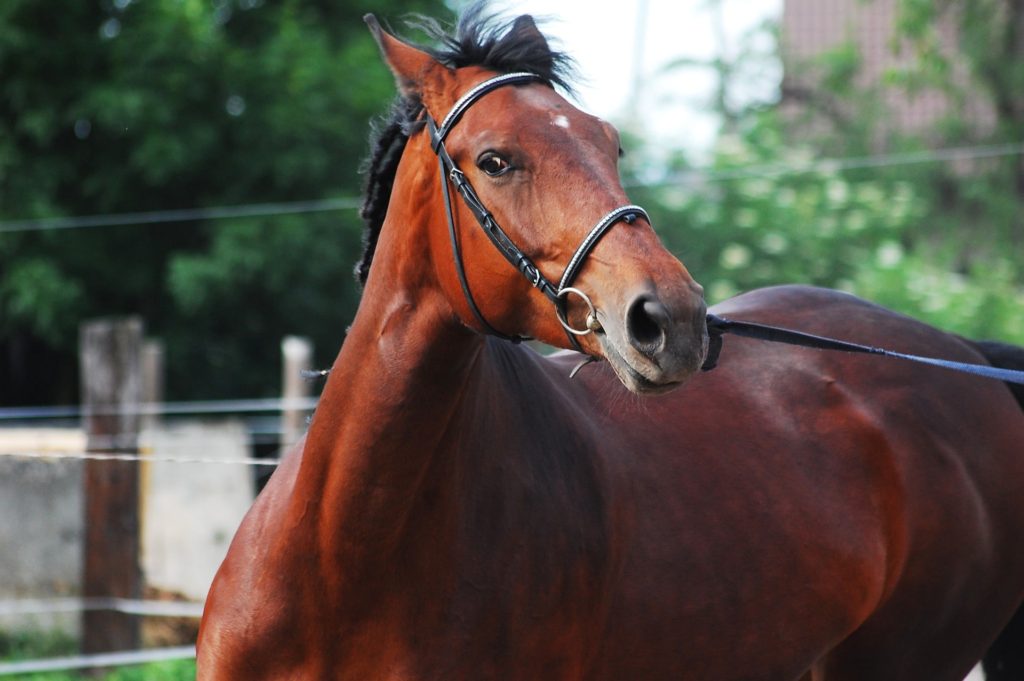
Source: Pixabay
In reality, the opposite can also be true: when a horse is expected to be the leader in the horse-rider dynamic, those expectations can create a vacuum of confusion, which will produce fear and a feeling that they need to fend for themselves.
This, in turn, can make them dangerous. Among other things, it can cause an otherwise mild-mannered horse to be spooky, pushy, challenging, controlling, and even aggressive.
When we expect our horses to be the leader, even subconsciously, they will rise to the occasion, but not in the way we want them to.
Ultimately, most horses want to be led by a leader they can trust with their lives. As I shared about my early days with Chip, his excessive fear and confusion could have easily landed us in extreme harm.
How to Keep Your Horse from Fending for Himself
Horses don’t become the way they are in a vacuum. What we do as riders, even if we’ve only ridden that horse a few times, can make a tremendous impact on their behavior and overall sense of well-being.
Here are a few things you can do to keep this dynamic from happening.
- Don’t Let Your Horse Be the Boss:
- Every horse will challenge your instruction from time to time, be it friendly testing or something they don’t want to do out of fear. Be firm in your decision, so long as you are sure that your request is not causing them pain, inciting too much fear, or putting them in harm’s way.
- I see a lot of riders go amiss in this category. They think the horse knows better than them, and will let them get away with running home from a trail, ending the lesson early, or pushing past them when leading. This is how the horse gets the sense that he’s the leader.
- Don’t Let Your Horse Back Out of a Situation Too Easily:
- We have to be mindful, of course, about our horse’s fears and not pushing them too far when trying to help overcome them. But as you ride them, you will know more and more the things they can handle with a little encouragement, and what is still too scary.
- For example, I know that Chip doesn’t like mailboxes, but can walk past them most days without encouragement. Yet on a random day, he might just stop before passing one by. With a few persistent squeezes, he will still proceed. If I let him avoid the mailbox, next time he will most likely do the exact same thing, and retrogress into being afraid of mailboxes and not need to overcome that lingering fear.
- We want to be aware of our horse’s fears and shortcomings, but we don’t want to coddle them either. This reinforces that you’re not willing to lead him, he must lead himself and those around him.
- Don’t Punish Them for Your Lack of Boundaries:
- This is probably the worst of this entire list, but I can’t tell you how often I observe this! A rider will allow their horse to get away with things, not lay down their expectations, and not encourage them towards better behavior.
- Then, out of nowhere, they decide the problematic behavior has gone on too long. Whereas the horse’s behavior has only gradually worsened, the rider will abruptly change their tune and start punishing their horse for all the bad behaviors they themselves have allowed.
- This is confusing to the horse, because he doesn’t know where he went wrong or when he stopped calling the shots. This reinforces his misplaced responsibility, and creates a vacuum of fear.
Psychologically speaking, this cycle allows the horse to lead, reinforces that he is the boss, and places a burden on him to make the right decision on his own with no direction.
While this seems initially what horses want when they’re challenging our requests, it’s not ultimately what is good for them. If they believe they’re in charge, they have the added herd responsibility to protect and lead. This means that they’ll often make decisions out of fear instead of trust, heightening their overall stress under saddle.
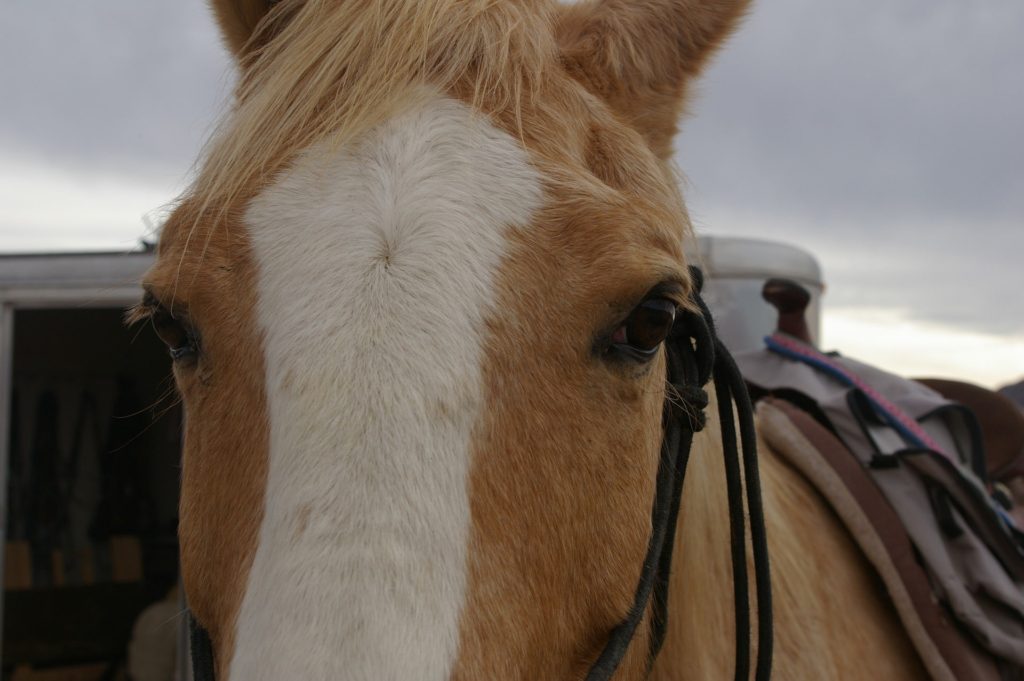
Source: Pixabay
How to Make Your Horse Feel Safe
Horses feel safer if things seem normal.
Create expectations for them in the following ways.
- Enforce Structure: In order to feel safe, your horse needs to know you’re the leader. This means not allowing bad habits to persist, rewarding submissive behavior and body language, and setting certain boundaries in their handling.
- Be Consistent:
-
- As you reintroduce boundaries and structure to your dynamic, your horse needs to see that once you have established the roles and rules that you will maintain them with overwhelming consistency. We’re not perfect, so this won’t 100% of the time. But reinforcing the rules, at least most of the time, is enough.
- Not only will this reassure your horse that you are responsible for leadership, but following through again and again will allow him to trust that you are a person of action. Horses are reassured knowing exactly what to expect of us.
-
- Establish Trust:
- In addition to being consistent in your leadership, a horse needs to know that you will not lead him into danger. (Silly him, eh?) We can show our trustworthiness by introducing him to new situations (trail objects, tack, riding maneuvers, grooming tools, etc.) with consideration for his anxiety level.
- Each horse owner knows her horse’s “triggers,” but it often comes in the form of excessive reactiveness. Start with things that are easy (i.e., not too scary), and show him that when he got through it, he was still okay. Praise his bravery and continue to build on it.
- Throwing your horse into a completely overwhelming or scary situation is not helpful–he will not be able to overcome it easily, and you won’t gain any credibility points, either. If a scary situation arises, keep walking your horse through it until it’s not scary anymore.
- Horses are highly memory-oriented, so it is worth the extra effort to reinforce good memories.
- Be the Cheerleader:
- Horses don’t need you to demand that they do something. They need you to believe that they can do it. He can sense my hesitation more quickly than I can.
- So believe in your horse, even when he doesn’t believe in himself. Horses will hold onto what you believe because of their intuition. It often becomes more real to them than the actual circumstance.
If I’m asking my horse to do something because I want him to, but my body fears that he won’t, we’ve already lost.
Keep the World’s Pressures off Your Horse’s Shoulders
Humans are so different than horses. Our brains have a much more sophisticated way of processing and engaging fear. At an instinctual level, however, fear is a common experience because it is a primitive brain function. That being said, think of how you’d want someone to walk you through fear.
My guess is that you’re like me, and you’d want someone to understand before they provide any input. But you’d also want someone to champion you by:
- Giving you encouragement packaged with some tough love, and
- Convincing him that walking through the fear is easier than holding onto the fear.
After a little time with Chip, I started to recognize the root of his spooks, and I needed to acknowledge them. I also needed to acknowledge that he felt the need to fend for himself, which was perhaps the real reason for his reactive behavior in the first place.
Showing him that it was my job to lead him, care for him, and make decisions was the biggest factor in transforming that crazy horse to the sweet gelding that I see today.
I took responsibility where responsibility was due, showed him I was trustworthy, and let him feel I believed in him. Not much time passed before his spooks were less frequent, he was relaxed under saddle, and he became submissive and happy. I gave him no other option than to rise to the occasion. Now what I have is what I saw from the beginning — a resilient horse.
Frequently Asked Questions
Why teach horses respect?
Horses should be taught to respect people, if for no other reason than pure safety. By nature, horses are highly social and prefer groups. In the wild, horses live in herds with complex social hierarchies. Some horses have more dominant personalities, others are more submissive.
Regardless of your horse’s natural predisposition, it is important he recognizes that people are always the leaders. It is never appropriate for a horse to get pushy with a human. If a horse gets away with violating basic boundaries, such as invading personal space, they may escalate to more dangerous behaviors such as kicking or biting.
How do horses become dangerous?
Horses are inherently dangerous—they are much larger than humans and are prey animals, so their brains are wired to look for scary things and run away from them. It is important to never let your guard down. Always scan the environment for stimuli that may spook a horse or create a dangerous situation.
A variety of causes can result in a dangerous horse. For example:
- A scared horse can become dangerous; once the “flight” response kicks in, the horse can be very difficult to control
- An abused horse can develop dangerous responses to ordinary stimuli
- A timid owner can slowly allow a horse to get out of control; if a horse learns they do not have to listen, they will continue to push boundaries and could create dangerous situations
- A horse that is injured or sick may act in a dangerous manner because of a pain response
Why do horses get aggressive?
Horses are not naturally aggressive animals, but they may act aggressively for a variety of reasons. A few might include:
- Fear: the horse is scared and is backed into a corner (literally or figuratively); if flight is not an option, they could be provoked into responding to a scary situation with aggression
- Dominance: horses can be aggressive to other horses to establish a pecking order
- Sexual competition: stallions can become aggressive when it comes to breeding
- Territory: horses can become aggressive if they feel they need to defend the herd or their resources (food, water, shelter)
Can dominant horses become dangerous?
Yes, but that doesn’t mean they will necessarily. While a dominant horse may be more predisposed to aggressive behaviors, they simply need to be kept in line and understand the human is the leader. It is very important to be consistent when interacting with any horse, especially a dominant one.
If the horse crowds your space, make him move away. If you ask the horse to do something, make sure he does it. Every interaction you have with a horse is training him; consistent behavior on our part will create an animal that knows what to expect and how to act.
What are the top 10 most dangerous horses?
Unlike dogs, specific horse breeds aren’t broadly associated with being more or less dangerous than others.
One might argue “cold blooded” breeds, such as draft horses, are generally mild mannered while “hot blooded” horses, such as Arabians or Thoroughbreds, are more high-strung. Specific personalities can be more dangerous if in the wrong hands. For example, a high-strung horse with more “go” than “whoa” won’t be a good match for a beginner.
P.S. Enjoy this article? Trot on over to:
- How to Help Horses in Need: A Veterinarian’s Perspective
- A Helpful Horse Gender Guide for Beginners
- 5 Simple Tips: How to Help an Abused Horse
- How to Sweeten the Deal for Buddy Sour Horses
- 32 Things you can do today to calm your riding nerves forever
- Teach a Horse to Stop Grazing While Leading (Step by Step)
- How can I calm my nerves before horse riding?
- What are some ways to gain confidence riding horses
- 6 Easy Clicker Training Exercises for Horses (With Pictures)
